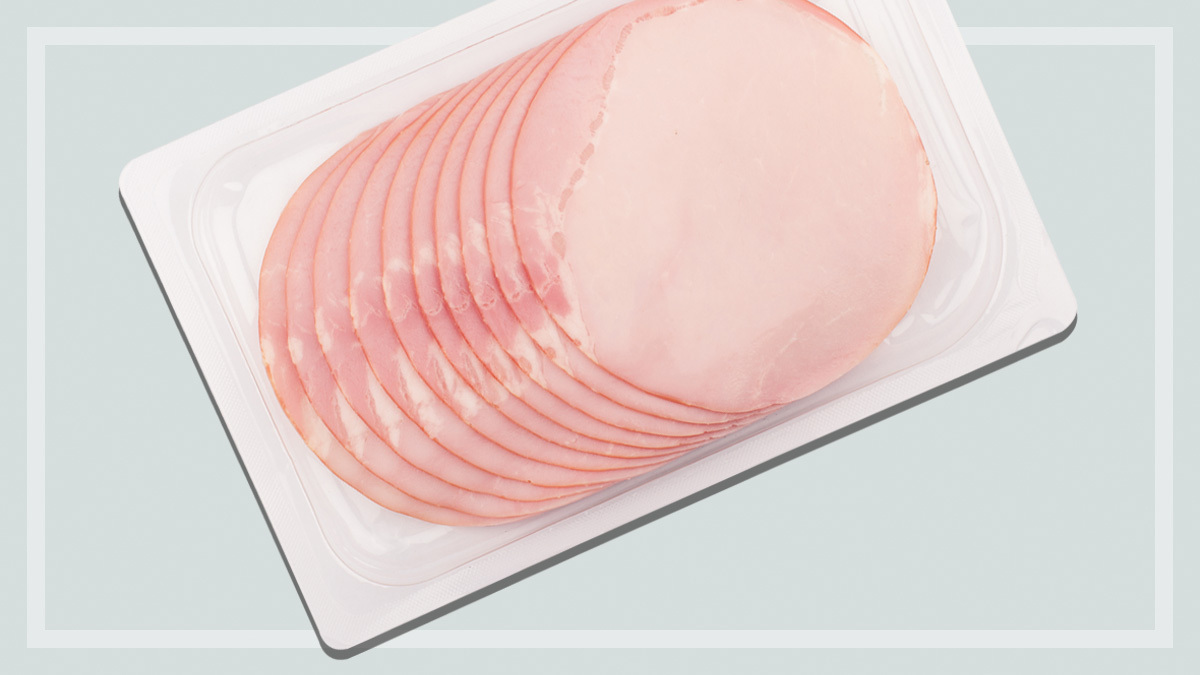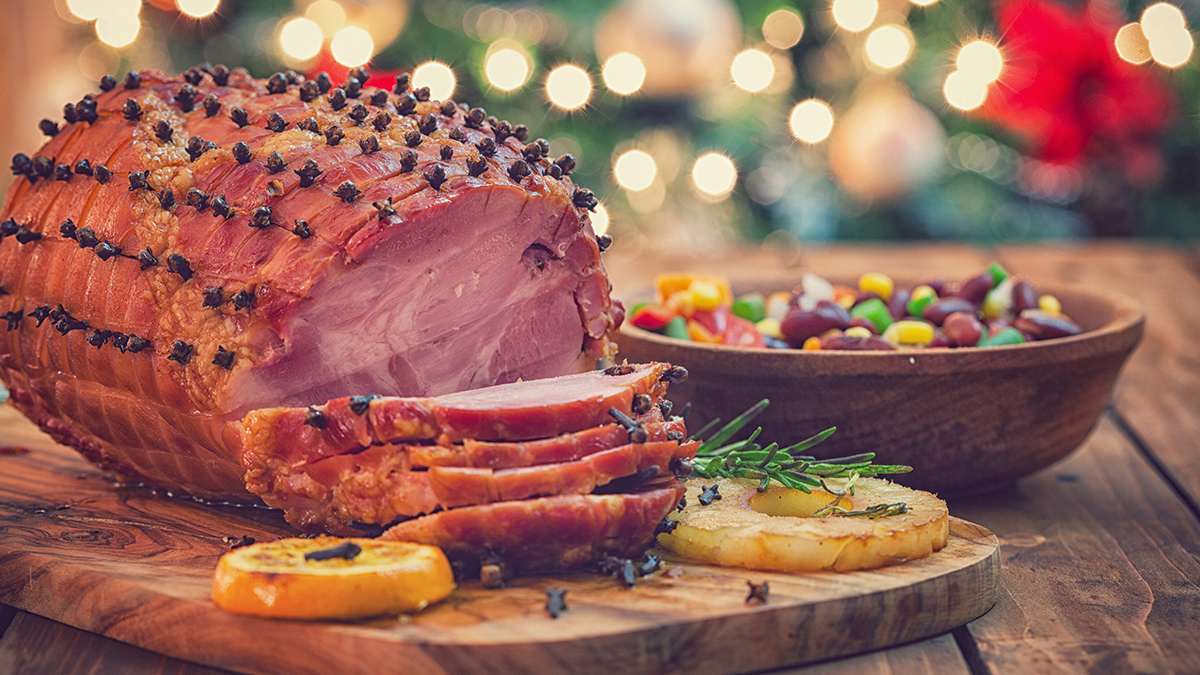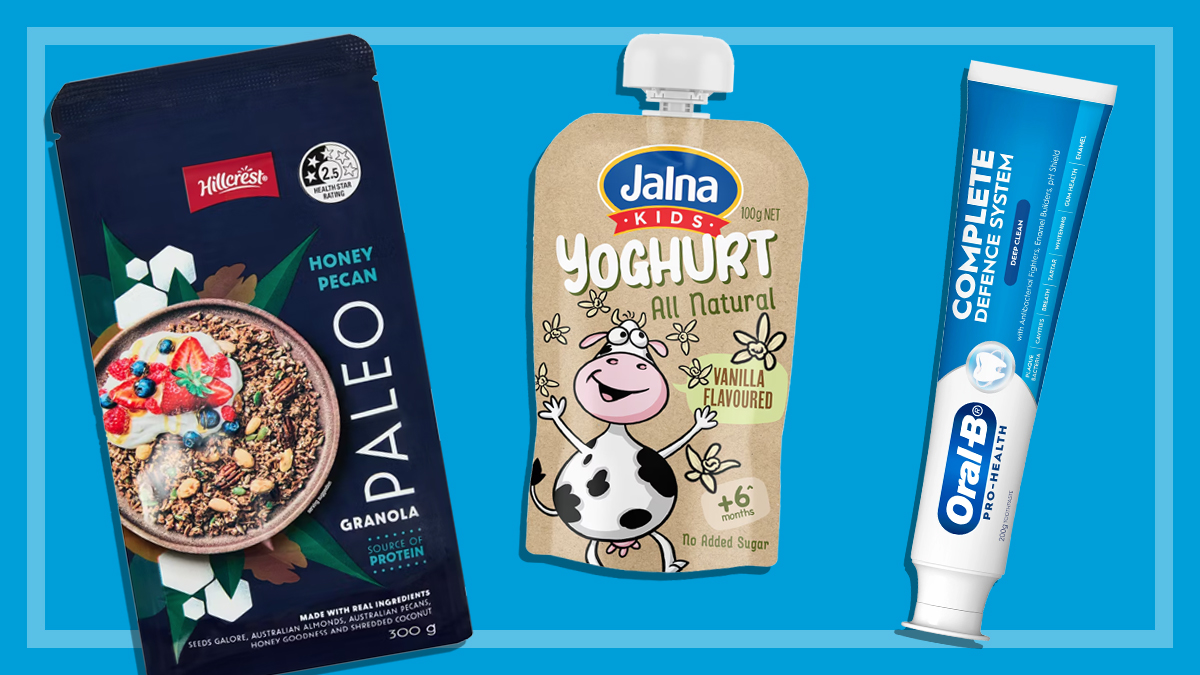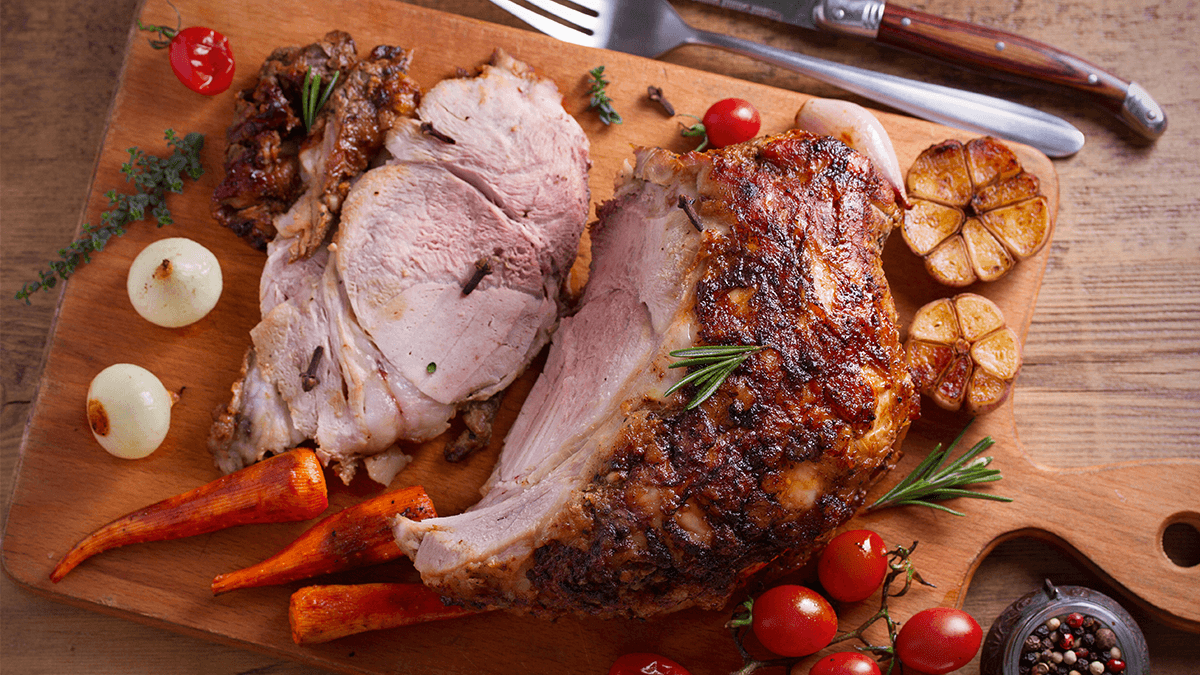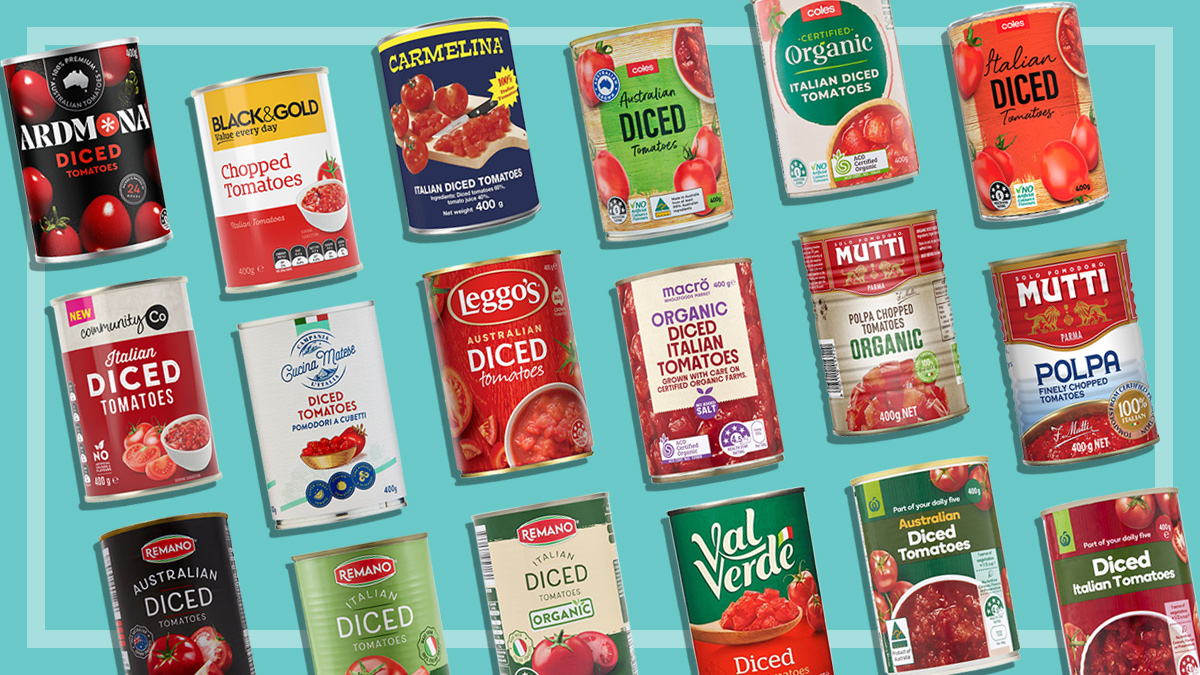Get our independent lab tests, expert reviews and honest advice.
What’s the best packaged ham?
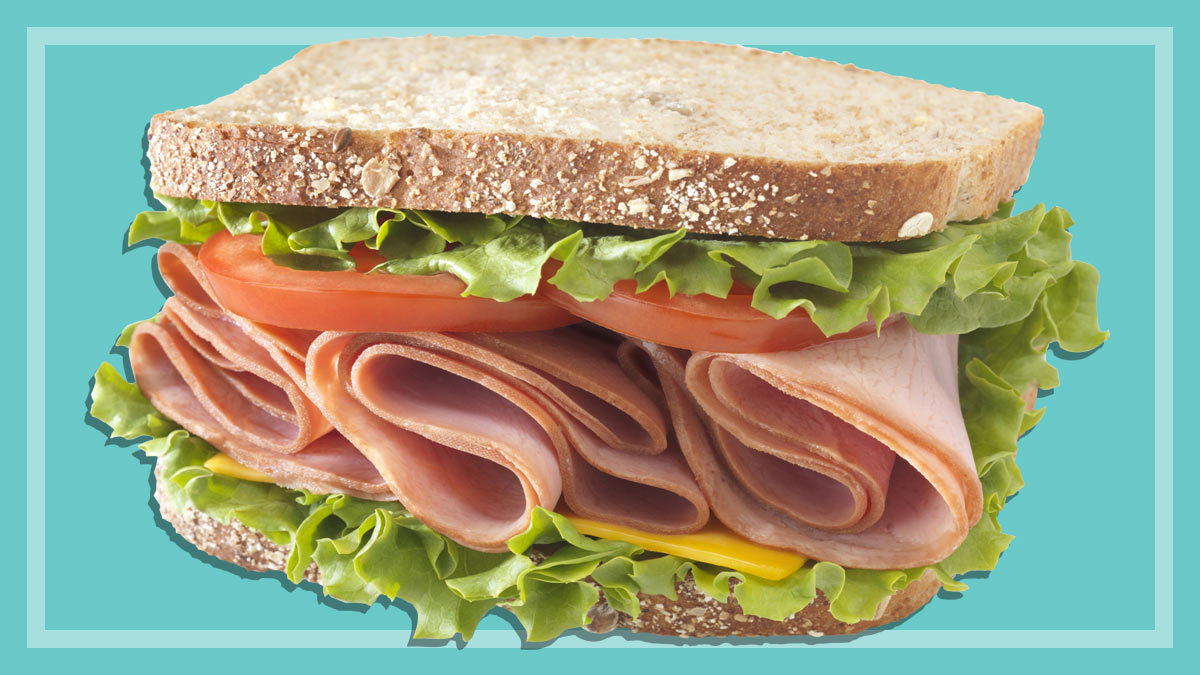
Packaged ham from the supermarket finds its way into many trolleys, a favourite filling for sandwiches, toppings on pizza or for cold-cut platters when entertaining. According to the 2018 Retail World Annual Report, ham is the largest part of the smallgoods segment – worth over $551.2 million.
On this page:
- Which packaged ham is the best?
- Different types of ham
- What's in my ham?
- Can sodium nitrite cause cancer?
- How we test
- Meet out expert tasters
So which packaged ham is best? We review English, champagne, smoked and honey ham varieties available at the major supermarkets from brands like Primo, Don, D’Orsogna, Coles, Aldi and more. We take a look at their nutritional information and put them to a panel of expert judges to find out which is the best tasting.
Which packaged ham is the best?
We put 34 supermarket packaged hams to the test. We look for products that deliver predominantly on taste (it accounts for 90% of the overall score), but we also take a look at their nutritional panels. We recommend six products that achieved an overall score of 70% or more.
Best smoked ham
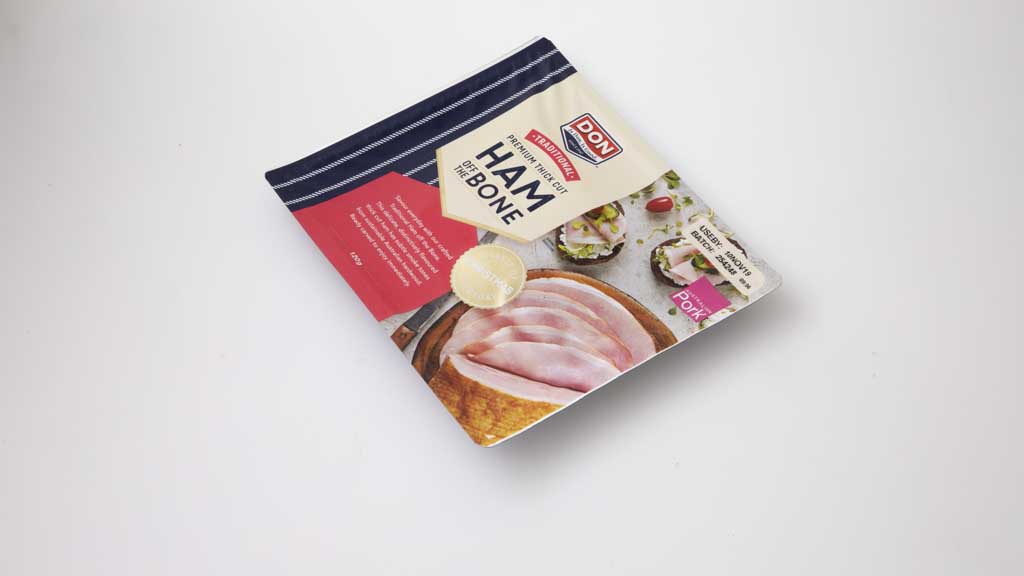
Don Traditional Premium Thick Cut Ham off the Bone
- CHOICE score: 76%
- Price per 100g: $3.99
- % Australian ingredients (minimum): 95%
- Experts say: “One of the only ‘real’ looking hams – great.”
Best honey ham
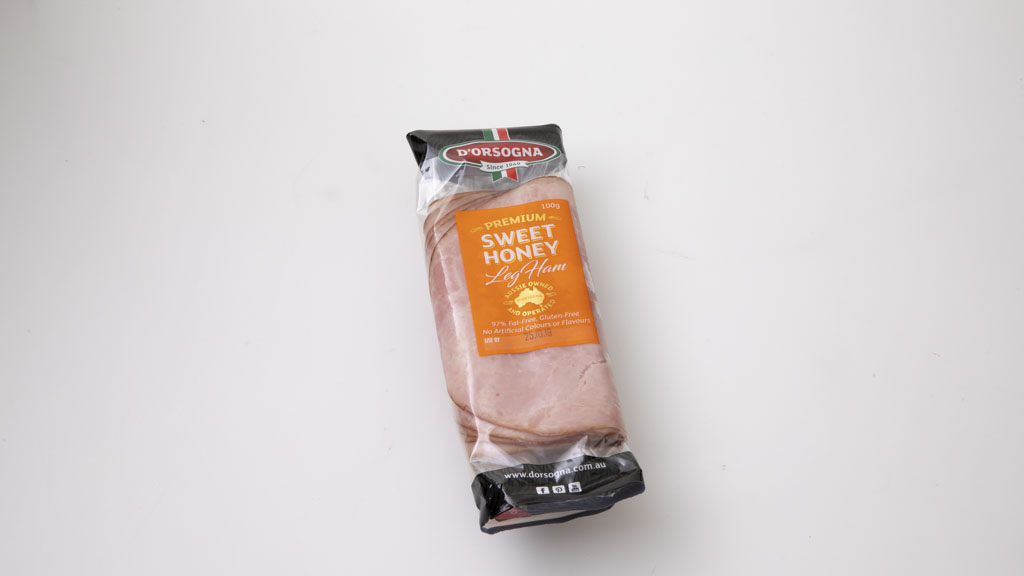
D’Orsogna Premium Sweet Honey Leg Ham
- CHOICE score: 74%
- Price per 100g: $3.70
- % Australian ingredients (minimum): 15%
- Experts say: Nice large size. Strong smoke profile, watery in texture. Good smoked rind, attractive, nice flavour.
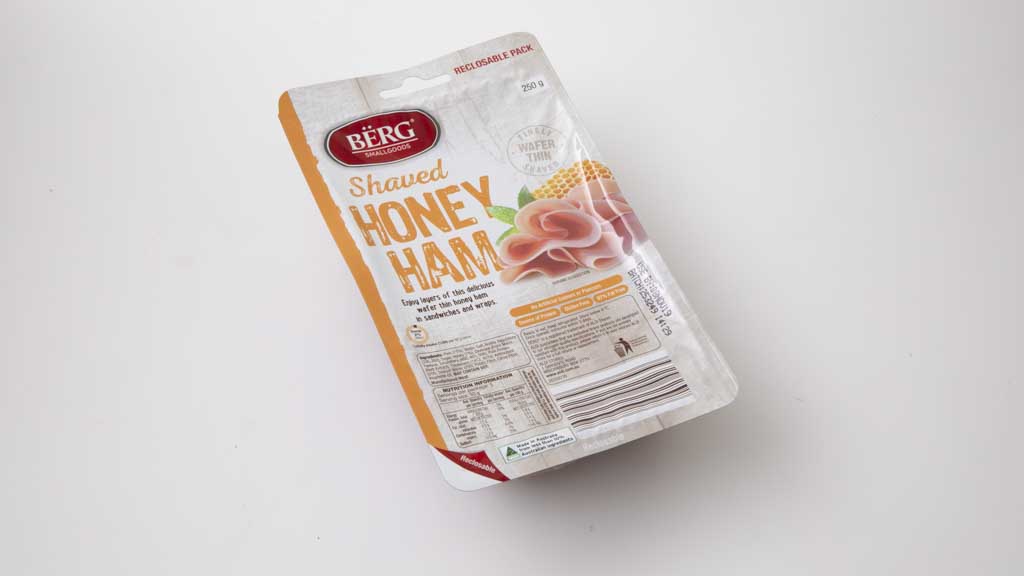
Aldi Berg Smallgoods Shaved Honey Ham
- CHOICE score: 72%
- Price per 100g: $1.60
- % Australian ingredients (minimum): 10%
- Experts say: “Smokey sweet, good flavour.”

Coles Honey ham sliced
- CHOICE score: 71%
- Price per 100g: $2.00
- % Australian ingredients (minimum): 17%
- Experts say: “Salty with a clean mouthfeel.”
Best English ham
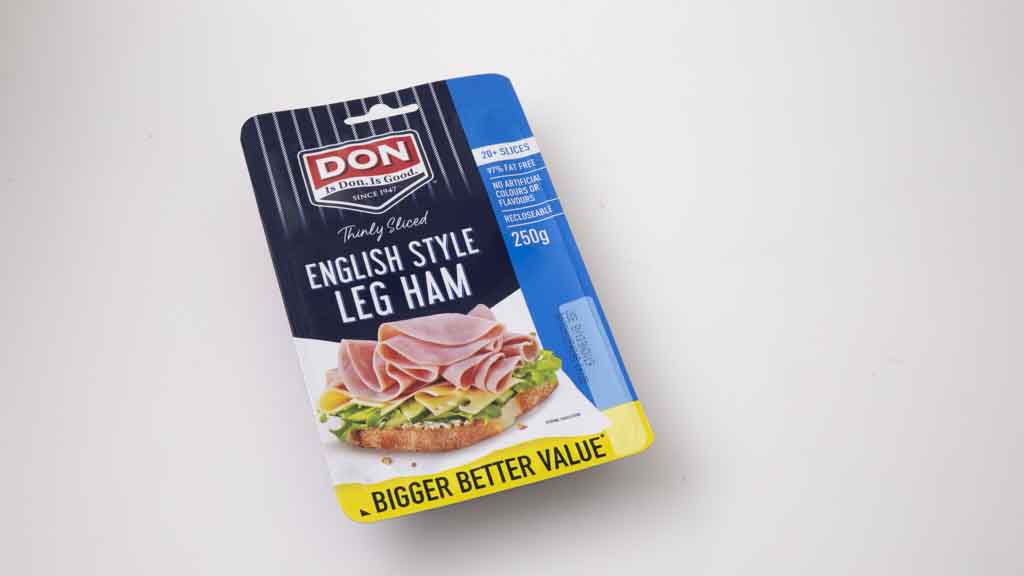
Don Thinly Sliced English Style Leg Ham
- CHOICE score: 72%
- Price per 100g: $1.80
- % Australian ingredients (minimum): 20%
- Experts say: “Nice salty flavour.”
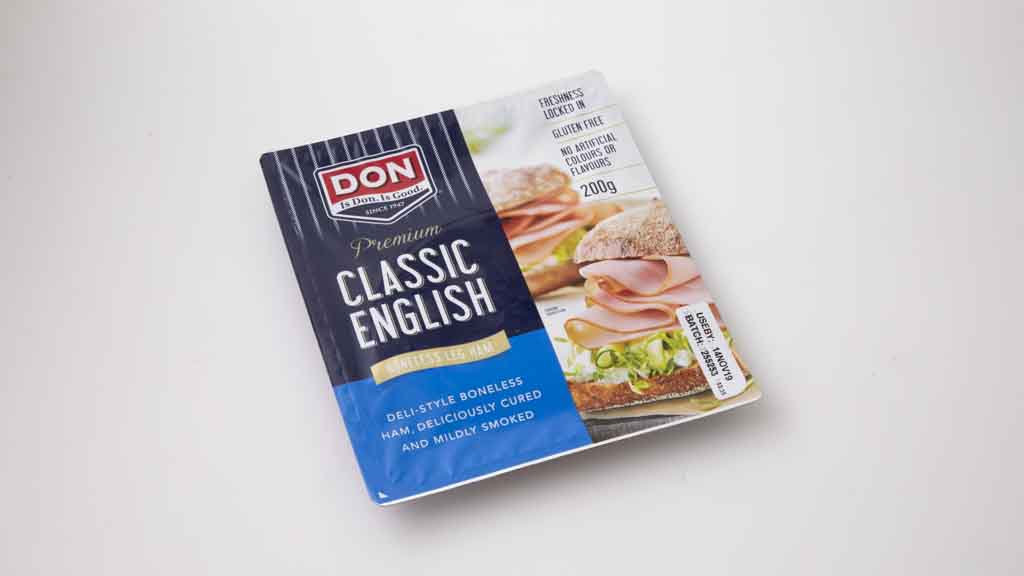
Don Premium Classic English Boneless Leg Ham
- CHOICE score: 71%
- Price per 100g: $3.25
- % Australian ingredients (minimum): 10%
- Experts say: “Balanced flavour, good sweet aftertaste.”
Different types of ham
There are so many types of ham on the supermarket shelves – champagne, honey, smoked, English and more, but is there any real difference between them?
Champagne ham
Originally called “champagne” ham because it was served at celebrations. You may be surprised (or disappointed) to know that it doesn’t actually contain any champagne.
Honey ham
Australian regulations require honey to be used in the ingredients. However, we found in our taste test that the honey flavour doesn’t always come through.
Smoked ham
Smoked ham seems to be the most popular – it was the largest group in our taste test. Hams can be preserved or flavoured either by smoking or by adding smoke flavour. Check the ingredients list to see what process is used.
English ham
English ham essentially refers to traditional leg ham (as the word ham comes from the Old English hamm).
What’s in my ham?
Pork content
The ham products we tested ranged in pork content from 69% to 92%.
Water
Water was the second ingredient across all the products we tested (ingredients lists are ordered in descending weight). Why? It’s a process called plumping, whereby producers inject the meat with saltwater solutions to create tastier, juicer ham.
Additives
You’ll also find a range of additives listed, including phosphates which increase the water-binding capacity of the muscle fibres (to prevent the added water from seeping out), maltodextrin which is a thickening agent, nitrites to prevent growth of bacteria and antioxidants to prevent colour and flavour loss.
Can sodium nitrite cause cancer?
Most of the ham products we tested use the preservative (250) sodium nitrite which helps to prevent the growth of bacteria and also gives ham its pinkish colour. Sodium nitrite has been listed as “probably carcinogenic to humans” by the World Health Organization’s (WHO’s) International Agency for Research on Cancer, because it can be converted into nitrosamines in the stomach which increases the risk of cancer.
In our test the Don All Natural Double Smoked Sliced Leg Ham, Don All Natural English Style Sliced Leg Ham and D’Orsogna 100% natural sliced ham double smoked don’t use preservative (250) but rather plant-based nitrites that are naturally occurring through fruit or vegetable extracts. However, according to research from our sister organisation Consumer Reports it doesn’t necessarily mean these products are any better to consume than the rest.
Ham is one of many processed meats (i.e. meats preserved by smoking, curing, salting or using chemical preservatives) which have been classified by the WHO as “carcinogenic to humans”.The World Cancer Research Fund recommends consuming very little, if any, processed meat so it’s important to be mindful of how much you eat.
However, it’s not all grim, Nick Fletcher, principal toxicologist at Food Standards Australia New Zealand (FSANZ), says, “People need to be reassured that nitrites and nitrates are safe at the level they occur in food, and that’s true for both food like fruits and vegetables that naturally contain them, and also through their use as a food additive [such as in processed meats].”
Sodium overload
It’s not surprising that ham is also packed with sodium (salt). The Australian Dietary Guidelines suggest limiting consumption of foods with added salt. You can do this by taking a closer look at the labels and choosing lower sodium options. However, all the hams we tested greatly exceed this requirement.
High sodium consumption is linked to increased risk of high blood pressure which can increase your risk of cardiovascular (heart) and kidney disease.
So should I ditch ham altogether?
You don’t need to give up ham and deli meats completely, but rather eat them sparingly. If you use them often for sandwiches, look for alternative fillings like tomato, cheese, tinned tuna or salmon, avocado, hummus and roasted vegetables.
Storing ham safely
The main food safety issue associated with packaged ham and other deli meats is Listeria – a food-borne bacteria that can survive the temperatures of the fridge. While most people can consume it without getting sick, Listeria is mainly a concern for pregnant women (listeriosis can be very dangerous for the unborn baby) who are advised to avoid deli meats for the duration of their pregnancy.
It’s important to store ham and other cold cuts properly. Rather than placing the opened pack back in the fridge, you should put the uneaten ham in an airtight container and into the fridge (at or below 4°C). Once opened it’s recommended you eat the ham within three to five days (check the pack).
How we test
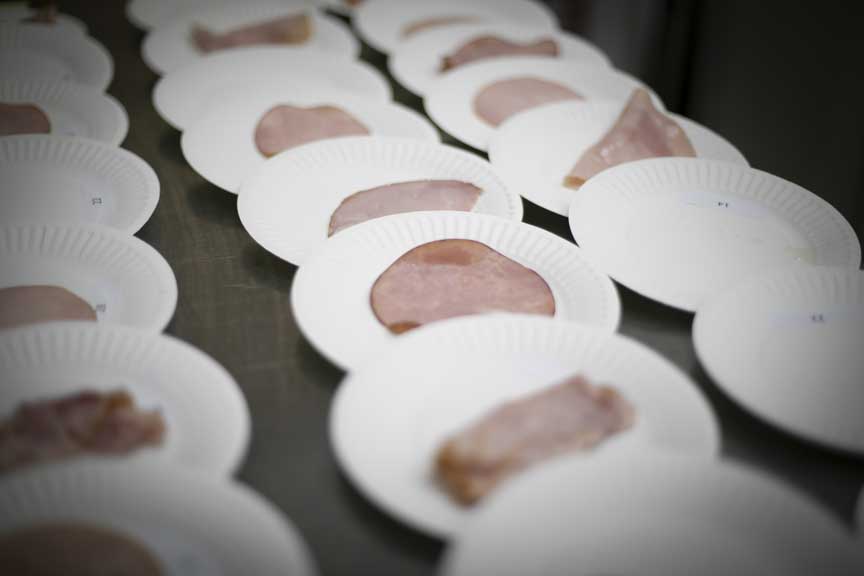
Products
We tested packaged sliced and shaved hams that are available nationally through at least one of the major supermarket chains, including English, champagne, smoked and honey varieties. Price is based on the price we paid in stores for the specified sized packet (not on special) in October 2019. A total of 34 supermarket ham products were tested.
Tasting
Our experts tasted the ham samples blind (without knowing the brands) in a randomised order, which was different for each expert.
Scores
Experts independently judged all ham products, scoring each sample for flavour, texture, appearance and aroma.
The CHOICE score is made up of:
- Taste 90% (consisting of 60% flavour, 20% texture, 10% appearance and 10% aroma)
- Nutrition 10% (consisting of 100% of Health Star Rating, calculated from the details in the nutrition information panel and converted to a percentage)
We recommend products with a CHOICE score of 70% or more.
Meet out expert tasters
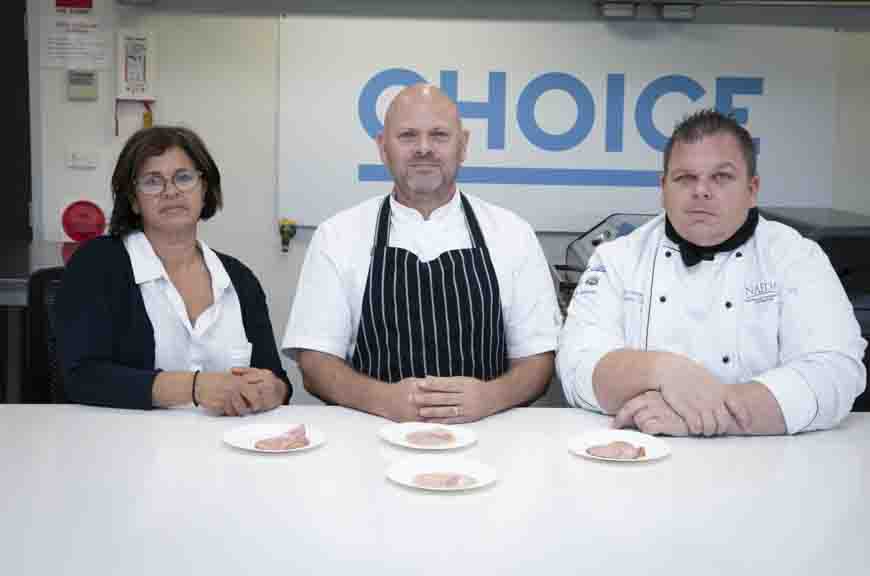
Adam Moore is ranked among the world’s top corporate chefs and is a prolific culinary food judge. He’s gained formal qualifications in pastry, charcuterie and butchery, sensory evaluation, food styling and food photography. With more than 25 years in the industry, he has worked in restaurants, food service, retail, food manufacturing, marketing and sales. He is currently working on his first cookbook, centred on his love of pork.
Paul McDonald is a commercial cookery teacher to diploma level, restaurant judge and author and has been running a successful personal chef company for many years. He has worked as an industry expert for Australia Pork, Meat & Livestock Australia and the Cancer Council.
Yiota Papanicolaou is a butcher and owner of Dulwich Hill Gourmet Meats in Sydney. The family-owned business has been running since 1984. An expert in smoking and curing meats, Yiota, along with her husband George and son Necta provide award-winning products including traditional and modern charcuterie.

